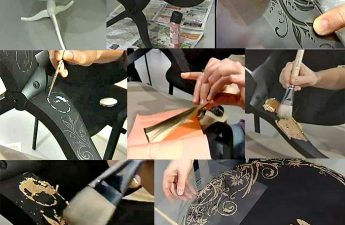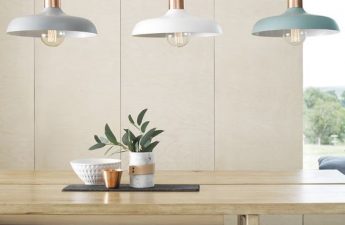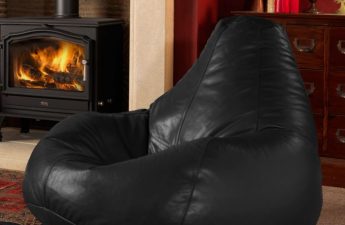Not only in the country, but also in the apartment furniture,made by yourself, can serve as a real decoration of the interior. And to make, for example, a round table with your own hands is not at all difficult. At the same time, you can take into account the dimensions that you need. And then the whole family will be able to gather on the veranda or in the living room for a festive dinner or evening tea. It is only necessary to decide in advance on the upcoming front of work.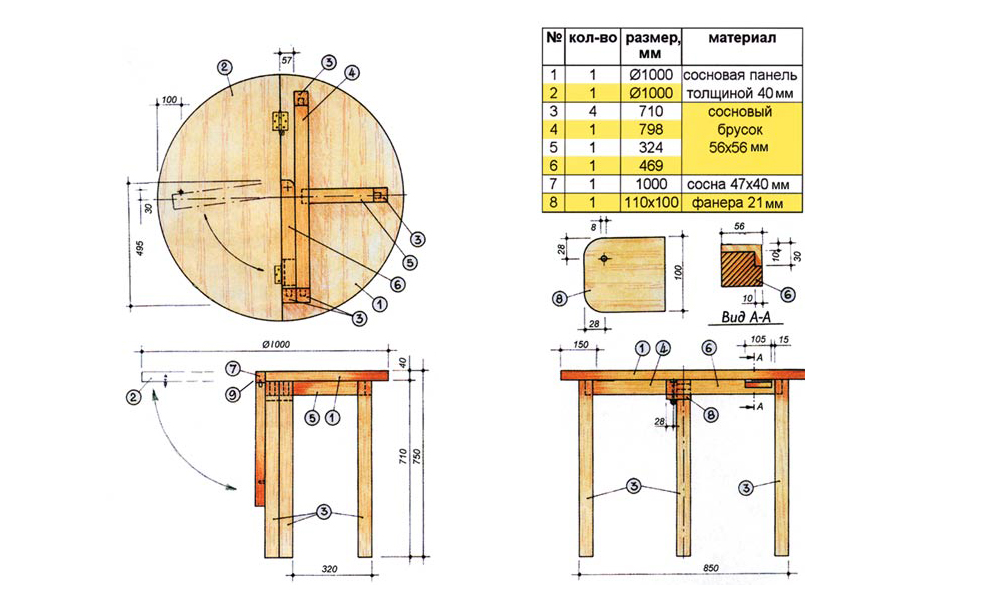 Figure 1. Diagram of a round wooden table.
Figure 1. Diagram of a round wooden table.
Preliminary stages of installation
Many beginning craftsmen have a question abouthow to make a round table yourself. It is believed that this form of tabletop is difficult to manufacture. But if you know some of the nuances and tricks of the upcoming work, then even a novice carpenter can handle the assembly. First of all, you need to decide on the design of the future furniture. A drawing of the simplest table for self-assembly is shown in Fig. 1. In this case, the furniture consists of the following elements:
- one-piece table top;
- support disk (bunch under the table top);
- crossbars (stiffeners) - 2 pcs.;
- legs - 4 pcs.
In the diagram shown the crossbars are simplyare placed on top of each other and fixed together. If you make the furniture legs long enough, then seated people will not touch them with their knees. But a more reliable fastening will be obtained if you insert one strip into another, forming the corresponding grooves in them.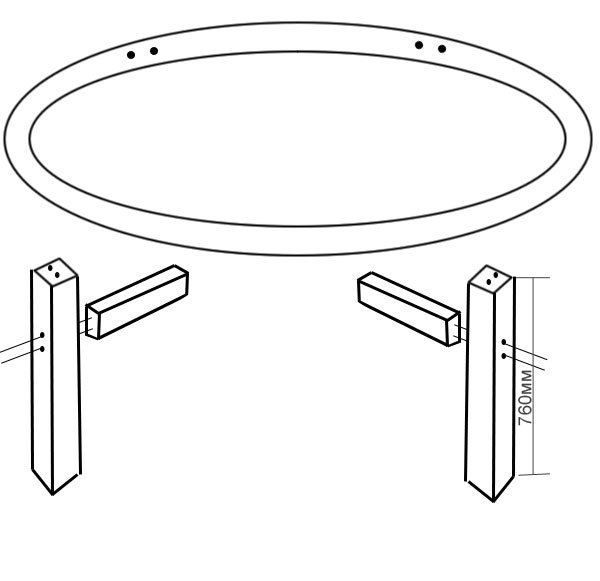 Figure 2. Assembly diagram of the round table parts.In addition, one strip can consist of two parts. Then the crossbars are fixed together with corners and attached to the tabletop with them. In this case, the overall structure is stable, but not very beautiful. To make a tabletop and a support for it, you will need a separate drawing. An example of it is shown in Fig. 2. You can provide your own dimensions and make the necessary adjustments to the table diagram. But it is quite difficult to cut out such a tabletop. It is much easier to contact a workshop. An experienced craftsman will make parts of any shape according to your dimensions. If you decide to make a round table yourself, you must first draw the desired part on the wood, then drill holes along the entire diameter (at a distance of 5-7 mm from each other). And only then saw the element, inserting the jigsaw blade into the first hole. In this case, it is easier to use a power tool. Return to the table of contents</a>Necessary materials and tools The easiest waymake a table with your own hands from a sheet of MDF or fairly thick plywood. The thickness of the material should not be less than 35 mm. Instead of plywood, you can use a ready-made furniture board, but in this case the cost of the entire product will increase significantly.
Figure 2. Assembly diagram of the round table parts.In addition, one strip can consist of two parts. Then the crossbars are fixed together with corners and attached to the tabletop with them. In this case, the overall structure is stable, but not very beautiful. To make a tabletop and a support for it, you will need a separate drawing. An example of it is shown in Fig. 2. You can provide your own dimensions and make the necessary adjustments to the table diagram. But it is quite difficult to cut out such a tabletop. It is much easier to contact a workshop. An experienced craftsman will make parts of any shape according to your dimensions. If you decide to make a round table yourself, you must first draw the desired part on the wood, then drill holes along the entire diameter (at a distance of 5-7 mm from each other). And only then saw the element, inserting the jigsaw blade into the first hole. In this case, it is easier to use a power tool. Return to the table of contents</a>Necessary materials and tools The easiest waymake a table with your own hands from a sheet of MDF or fairly thick plywood. The thickness of the material should not be less than 35 mm. Instead of plywood, you can use a ready-made furniture board, but in this case the cost of the entire product will increase significantly. Figure 3. Drawing of a round table top.The lower disk, which serves as the basis for attaching the legs and connecting the structure to the tabletop, is cut out of 20-30 mm thick plywood. This will be enough to securely fix all the elements together and not damage the table top. Crossbars are cut out of the same sheet. The legs are made from a bar with a cross-section of 12x5 cm. If you take a standard bar, the length of which is 3.5, then from one blank you can get 4 legs of 76 cm each. This size is considered optimal. The following tools are needed to process the parts and assemble the table:
Figure 3. Drawing of a round table top.The lower disk, which serves as the basis for attaching the legs and connecting the structure to the tabletop, is cut out of 20-30 mm thick plywood. This will be enough to securely fix all the elements together and not damage the table top. Crossbars are cut out of the same sheet. The legs are made from a bar with a cross-section of 12x5 cm. If you take a standard bar, the length of which is 3.5, then from one blank you can get 4 legs of 76 cm each. This size is considered optimal. The following tools are needed to process the parts and assemble the table:
- Electric drill and set of drills designed for woodworking;
- electric jigsaw;
- grinding machine or special drill bit;
- a set of hex keys of different sizes;
- screwdrivers;
- a set of sandpaper of different granularity;
- paint brushes and foam roller.
All mounting locations and assembly units forFor additional reliability, experts recommend coating with wood glue or PVA. In this case, the fixed parts must be tightened with clamps and left until the adhesive is completely dry. And only then continue the installation. Return to contents</a>
Assembly of the round table
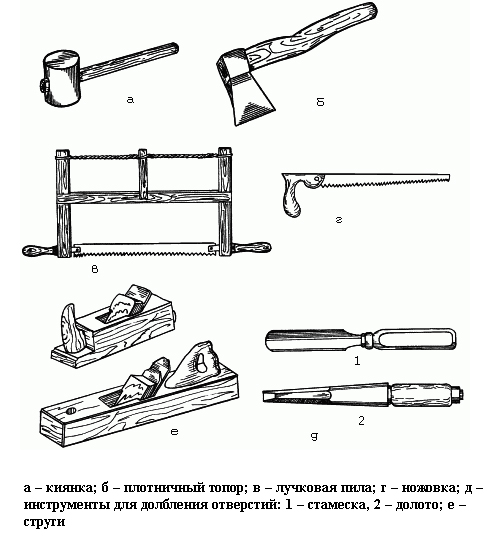 Tools for making a round table.First, you need to cut out all the blanks for assembling the table. Experienced carpenters advise pre-processing each of the elements in 4 stages. First, polish the wooden surface, then varnish it. And after drying, repeat the operation. The fact is that even after very thorough initial sanding, wood fibers can begin to stick out under a layer of varnish. This can spoil the appearance of the table, and burrs will form on the surface in the future. If you are not going to varnish the furniture, but cover it with stain, then the procedure must be repeated 3 times. After the blanks are completely dry, you can begin to assemble the table. The general assembly diagram is shown in Fig. 3. First, fix the legs to the support disk. Ordinary self-tapping screws can be used as fasteners. But the structure will be more reliable and stable if you take confirmats (Eurobolts). Then the table will be able to withstand a greater load. But it is wiser to take not standard, but extended fasteners (0.5x18 mm). The legs are attached with 4 bolts. It is necessary to prepare the sockets for the confirmats in advance. First, the plane is drilled, and then the end. In the first case, the socket diameter should be 0.8 cm, and in the second - 0.5 cm. Next, the tabletop and crossbars are formed. The diameter of these parts depends on the dimensions of the standard workpiece. The side length of ordinary plywood is 1.5 m. Therefore, the outer diameter of the support element will be 128 cm, and the inner - 104 cm. The legs are installed with the flat part inward. Accordingly, the dimensions of the strip will be 12x106 cm. Return to the table of contents</a>
Tools for making a round table.First, you need to cut out all the blanks for assembling the table. Experienced carpenters advise pre-processing each of the elements in 4 stages. First, polish the wooden surface, then varnish it. And after drying, repeat the operation. The fact is that even after very thorough initial sanding, wood fibers can begin to stick out under a layer of varnish. This can spoil the appearance of the table, and burrs will form on the surface in the future. If you are not going to varnish the furniture, but cover it with stain, then the procedure must be repeated 3 times. After the blanks are completely dry, you can begin to assemble the table. The general assembly diagram is shown in Fig. 3. First, fix the legs to the support disk. Ordinary self-tapping screws can be used as fasteners. But the structure will be more reliable and stable if you take confirmats (Eurobolts). Then the table will be able to withstand a greater load. But it is wiser to take not standard, but extended fasteners (0.5x18 mm). The legs are attached with 4 bolts. It is necessary to prepare the sockets for the confirmats in advance. First, the plane is drilled, and then the end. In the first case, the socket diameter should be 0.8 cm, and in the second - 0.5 cm. Next, the tabletop and crossbars are formed. The diameter of these parts depends on the dimensions of the standard workpiece. The side length of ordinary plywood is 1.5 m. Therefore, the outer diameter of the support element will be 128 cm, and the inner - 104 cm. The legs are installed with the flat part inward. Accordingly, the dimensions of the strip will be 12x106 cm. Return to the table of contents</a>
Finishing of the table
If you want to use crossfastening of the strips, then in the blanks it is necessary to form the corresponding grooves in advance. The thickness of the crossbar should not be less than 2-2.5 cm, otherwise the strip in this place may break. But for a garden table it is quite enough to fix the crossbars with an overlap. After the table is completely assembled, and the glue in the fastening units has dried, you need to start decorating the table. As mentioned above, it can be varnished, covered with stain or paint. If you are making furniture for the living room, then it is wiser to combine the first 2 options. That is, first soak all surfaces with stain, and then treat with varnish. If you use a product with a coloring pigment, then even the simplest plywood can be given the appearance of noble types of wood: oak, hornbeam, beech, mahogany. In this case, a colorless transparent furniture varnish is used for the final finishing. It is applied with a small foam paint roller. Then the surface will be smooth and bubbles will not form on it. Furniture intended for a summer house can be decorated with water-based acrylic paint. In this case, white enamel is usually used, adding special pigments to it.
